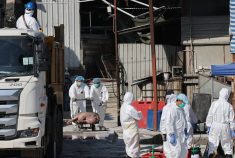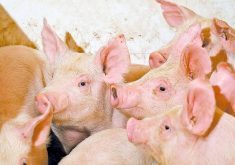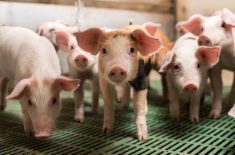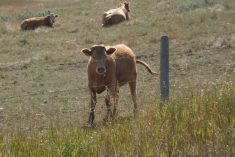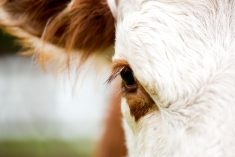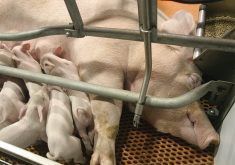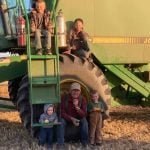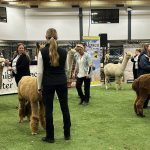There’s a growing realization that wild pigs are becoming a major threat to Prairie agriculture — but also concern that a new provincial bounty could worsen the problem.
“Wild pigs are the worst invasive large mammal on the planet,” said Ryan Brook, a USask associate professor of animal sciences and the country’s leading expert on the feral animals.
“Over the last six years, we’ve seen this pretty dramatic spread of pigs, and an increase in their range and so there’s a lot of concern.”
Read Also
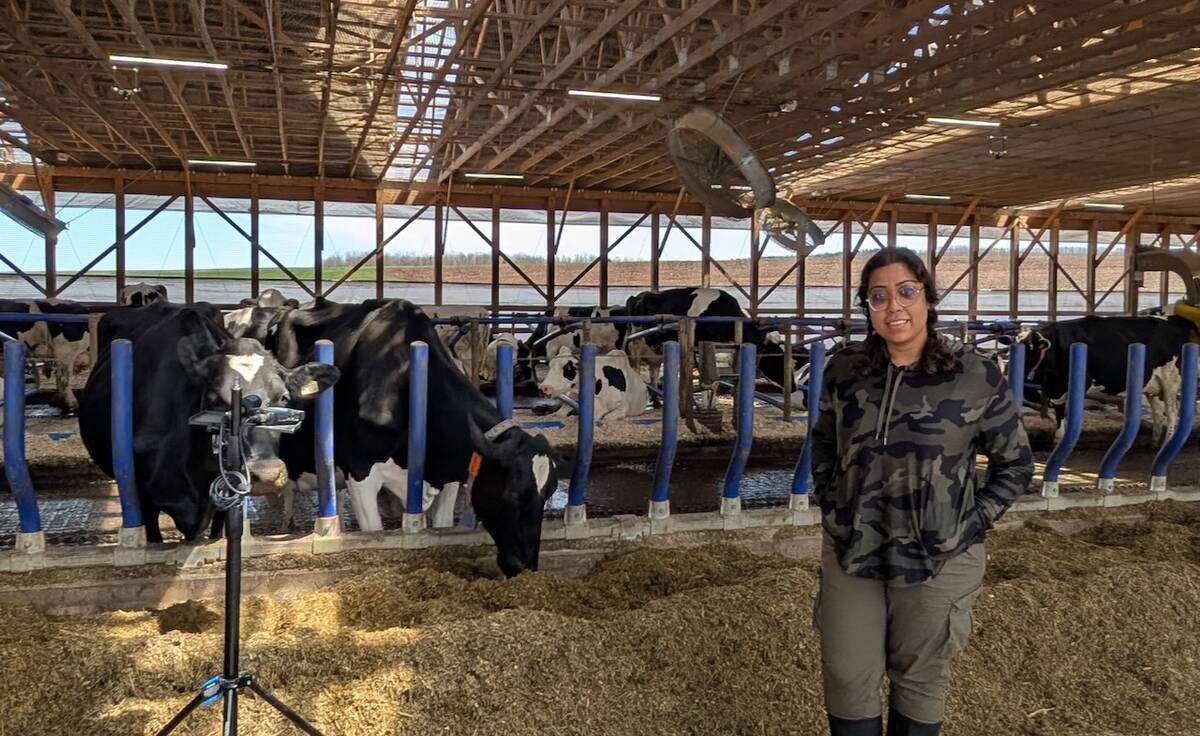
Moo translator and methane measures: There’s an app for that
Dalhousie University researchers use artificial intelligence to create new dairy farm apps that analyze cattle sounds and measure methane.
And that concern has escalated because the feral animals can spread African swine fever, even to domestic pigs. The deadly disease, which is endemic in Africa, decimated half of China’s pig herd (the world’s largest) after arriving there in 2018. It has since spread to Europe, roiling Germany’s pork sector after swine fever was found in wild boars there last year.
“We know that wild pigs can be a reservoir and a vector for African swine fever and they can spread it to other wild pigs and to domestic pigs,” said Brook, director of the Canadian Wild Pig Research Project. “We know from other experts that if African swine fever arrived in Canada, it would be quite catastrophic for the swine industry.”
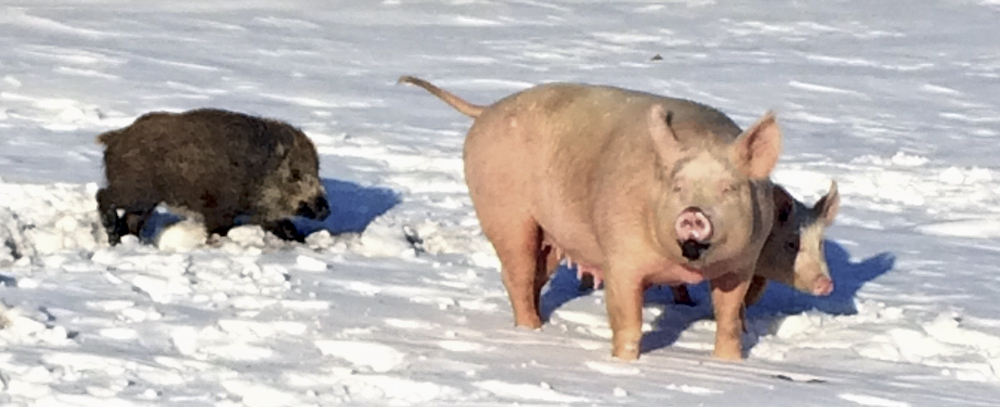
The feral hogs found on the Canadian Prairies are basically “super pigs,” he said. They are descendants of wild boars that were originally imported by a few farms and then escaped, crossbreeding with domestic pigs.
“You get a longer animal, you get a larger animal, you get a larger litter size, and more frequent litters — all of these things that have been bred into domestic pigs,” said Brook. “That was good for production, but means these animals were even more effective at surviving in the wild with a bigger litter.”
There are typically six young per litter, and sows have two or more litters a year.
“Wild pigs can have babies through all seasons and are continuously squirting out babies onto the landscape,” said Brook. “They have amazing reproductive capacity. They are very mobile and have much larger ranges than our native ungulates that we’ve studied, like deer, elk and moose.”
In Alberta, the primary hot spots are west and northwest of Edmonton and in the Lloydminster area, but there have been reported sightings over most of the province from the Peace to the U.S. border.
Controversial bounty
Last month, the province launched the Wild Boar Control Program, which it describes as “a co-ordinated approach to eliminating the threat of invasive wild boar.”
But along with increased surveillance and including wild boar damage under provincial crop insurance coverage, the program also features a bounty of $75 (per pair of ears) for trappers and hunters. In the case of trapping, the program wants trappers to capture an entire sounder (the name given to a herd of wild pigs).
But the program also offers the same $75 bounty to hunters under a one-year pilot program. Trapping an entire sounder is the recommended control method — it is done by regularly placing food in a pen and then closing a remote-controlled gate once an entire group is present.
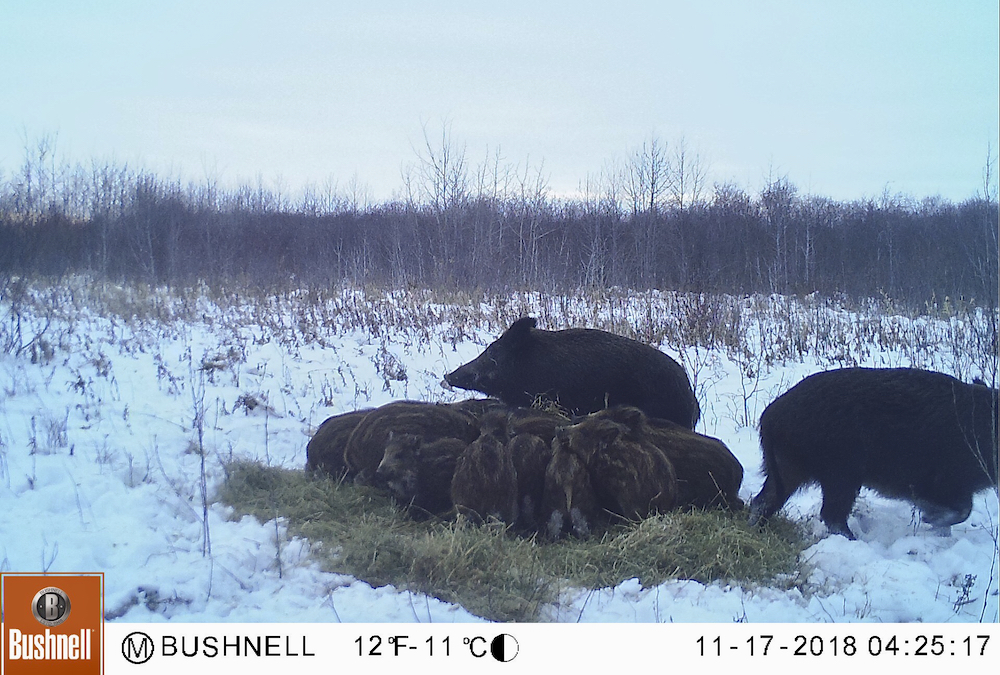
However, shooting individual animals is counterproductive because it causes others in a sounder to scatter and create new groups, said Brook.
“This crazy notion of applying a bounty is a major step backwards,” he said. “There’s no scientific analysis to support a bounty program for hunting.
“My recommendation has been — and continues to be — to put a total ban on sport harvest and remove bounties and focus on the trapping efforts the province has talked about.”
Three municipalities (the municipal districts of Bonnyville and Peace along with Stettler County) are participating in the pilot for hunter bounties (which runs until March 31, 2023), according to the Alberta government’s website.
However, feral pigs are hard to find at the best of times.
“They are very intelligent, and they will become nocturnal when they are under any type of pressure, like when people try to shoot at them or chase them,” said Brook.
Major study funded
But the problem is also getting more attention from researchers.

In March, Dr. Mathieu Pruvot was awarded nearly $1 million for a four-year project that will increase monitoring of wild pigs, examine their interactions with livestock (both pigs and cattle) and provide a better handle on the pathogens they carry (and transmit).
“Wild pigs have been a problem for a long time, but they are starting to reproduce more and more, and so we’re starting to see them in places like the national park network,” said Pruvot, an assistant professor in the University of Calgary’s faculty of veterinary medicine.
“Elk Island Park was the first national park where wild pigs were detected. That brings concern from multiple stakeholders.”
Alberta Pork, Alberta Beef Producers, the provincial Ag Ministry, the Canadian Food Inspection Agency and the Alberta Biodiversity Monitoring Institute are all participating in the project. Results Driven Agriculture Research is providing $432,000 of the $973,000 in funding.
“About a third of the rural municipalities in Alberta have had wild pig sightings — that’s 24 rural municipalities,” said Pruvot. “In Saskatchewan, up to 80 per cent of municipalities have wild pigs.”
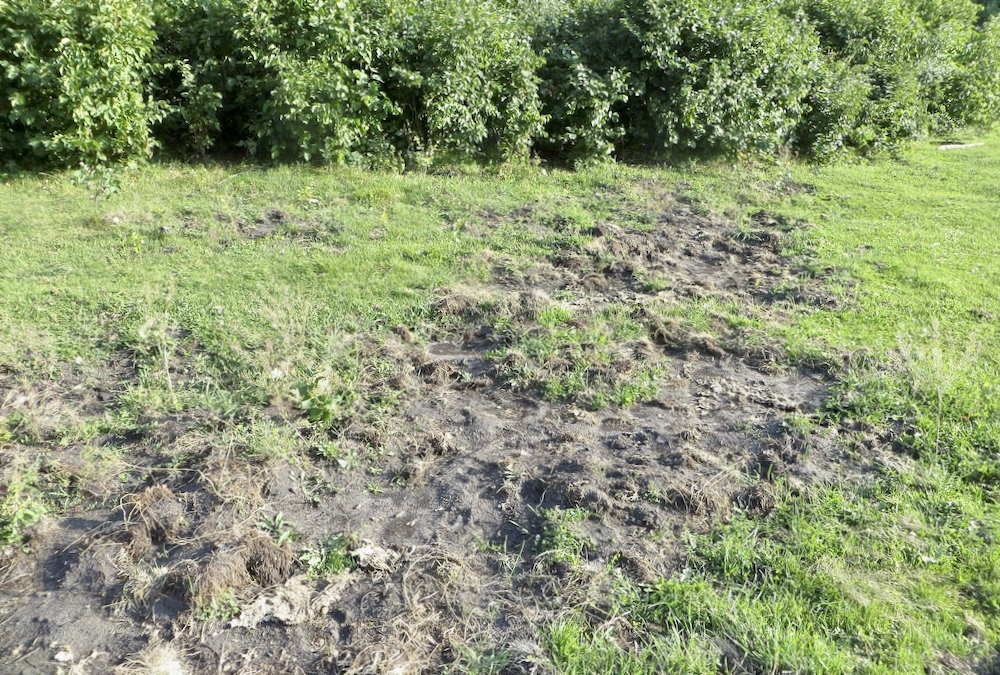
Their ability to transmit infectious diseases will be a focus of the project.
“We know these wild pigs are able to carry a huge variety of pathogens, and so I’m interested in what this means as a risk for livestock production — both cattle producers and domestic pig producers — in terms of a biosecurity risk,” he said.
“Once we know where they are located and where we can find them, we want to look at more small-scale interactions between species — when the pigs are hanging out at ranches or pig farms, how close they get, what affects them and how do they interact with livestock.”
The researchers will start building baseline information on pathogens present in wild pigs.
“The focus will be on Alberta, but there is some tie with Saskatchewan, particularly with Ryan Brook, who has been documenting lots of information on the distribution of wild pigs,” said Pruvot.
Report sightings
The province is asking members of the public to report sightings of wild pigs or signs of their presence. A government website has a link to a form for reporting a sighting as well as a link to a web page with photos and description of signs such as crop damage, wallowing and hoof prints.
The Alberta Invasive Species Council also encourages people to report sightings calling 310-Farm, emailing [email protected] or by calling your local municipality.
As well, the Alberta Biodiversity Monitoring Institute has a very large monitoring program that uses trail cameras across Alberta. There are also ongoing programs that detect the DNA of wild pigs in water.
Info on the Wild Boar Control Program for trappers, hunters, and those suffering crop damage is available. That web page has a link to the expanded Wildlife Damage Compensation Program run by the provincial crop insurer, Agriculture Financial Services Corporation.
“Producers wishing to participate in the program are not required to have AFSC insurance to qualify for a claim,” the insurer’s website states. “All costs for this program are paid by the federal and provincial governments; producers pay no premium or administration cost except for the appraisal fee. A non-refundable appraisal fee of $25 per inspection type is required for each section of land or portion thereof on which the damage has occurred.”
Producers have to contact the Ag Ministry’s wild boar specialist and “will be provided with mitigation options.”
“Unlike other wildlife damage, producers are not allowed to hunt, or allow others access to hunt wild boars on their property,” the website states.
The Canadian Wild Pig Research Project has a map of wild pig sightings on its Facebook page. On the pinned Facebook post at the top, download the map of Alberta. Then use a free Google Earth app (on a phone, laptop or desktop). Once installed, you can see where sightings of wild pigs have been reported.




